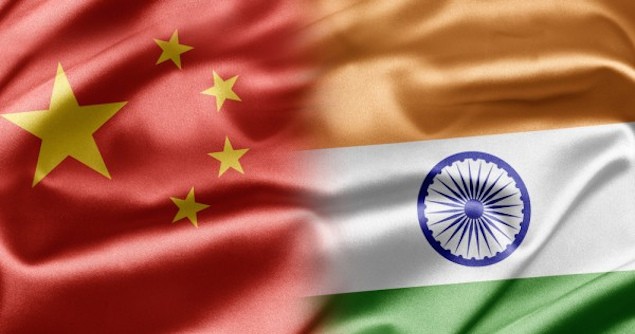China-India: Rivals in the 21st Century

China and India have a history of conflict. The recent bi-lateral visit does not change the fact that both India and China see themselves as great powers in the 21st century with conflicting interests. Yet the accumulation of power by both sides is unlikely to result in conflict, but a continuation of the status-quo with varying levels of intensity in competition.
Before Prime Minister Modi hosted President Xi during the recent bilateral visit, India announced a $100 million export credit to Vietnam—a country that has serious maritime disputes with China—for defence and energy deals. And on the day of President Xi’s arrival in New Delhi, Chinese troops reportedly encroached upon Indian territory. It appears that, the announced trade deals may serve to mitigate but fail to overcome the longstanding mutual suspicion.
History
In analysing whether or not power competition may lead to conflict between the two nations, the Sino-Indian war of 1962 marks the recent history of vast territorial disputes. The border dispute intensified with Chinese claims to large parts of Indian territory in the state of Arunachal Pradesh and India’s bid on the autonomous region of Tibet.
The historical grievances felt by India after its memorable defeat in 1962 partly explain the anxiety it feels today. Until 1955, when the Non-Aligned Movement (NAM) was announced in Indonesia alongside the Chinese Premier and Indonesian President, the two countries—whilst not allies—shared a compatible strategic outlook. The subsequent war not only shattered India’s plans for the NAM, but is also credited with instilling a permanent Sino-Indian rivalry.
This deep-rooted mistrust will likely continue despite new cooperation amongst the BRICS nations, and the recent re-energised emphasis on the Five Principles of Peaceful Co-Existence.
Stand-off
There have been brief stand-offs between the two militaries since 1962; the most significant taking place in 1986, when India mobilised 200,000 troops to the region and one that ended typically with the negotiation of a diplomatic process. The border defence cooperation agreement signed in 2013 is just the latest manifestation of the repetitive practice that has been dragging on for 20 years with no promise of significant compromise by either side.
The entrenched views are illustrated by both states with Prime Minister Modi pledging to defend the disputed territories and China publishing a map incorporating them to its own. These tensions are further reflected in a poll, which found that 72 per cent of Indians were fearful the issue could spark conflict.
Strategic Hedging
China supports Pakistan; a rival and security concern for India. From 2007 to 2011 64 per cent of Chinese military exports went to Pakistan. When US and India finalised a civilian nuclear deal in 2008, China also announced an agreement to help expand Pakistan’s nuclear capability. India, in a similar fashion, has been expanding its diplomatic network into South East Asia. Alongside recent moves to deepen defence and energy ties, India also pledged to support Vietnam in national defence in 2013. In addition, India has formed close relations with Japan; itself currently engaged in maritime disputes with China.
By aligning itself with China’s regional competitors, India’s strategic hedging implies a different path than its traditional position of non-alignment, as the 1962 war with China that left India without allies or support showed that this strategy may have been a mistake. Its current attempts at establishing partnership appear to be directed towards overcoming the past isolation
Maritime Competition
Roughly 89 per cent of China’s energy is sourced via the Indian Ocean, which also channels 93 per cent of India’s oil. This indicates that competition—but not conflict itself—may be inevitable. Control of the Indian Ocean has long been equated to the ‘domination of Asia’; a characteristic attributed to the US. The fact that the US spends roughly 77 per cent of its defence budget in Asia—while China spends seven and India four per cent—indicates that China’s primary concern in the Indian Ocean is not India, but the US.
China and India have competing territorial and maritime claims with competition being the governing principle in Sino-Indian relations. However, the rise in their respective military capabilities does not provide a likely indicator for future likelihood of conflict. In fact, both countries have indicated a willingness to resolve border disputes in the most recent BRICS summit in Brazil on July. China also holds a surprisingly good record of conflict resolution with regards to land border disputes, having resolved 12 of its 14 boundary disputes with neighbours.
For the time being, China is more concerned with the US power in the region while India is developing its own foothold in the Indian Ocean. And even though both countries’ track records prove unlikely to provide a permanent solution, both India and China are likely to avoid immediate conflict.
Patrick Hill is a former intern at the AIIA National Office. He has a degree in Law and International Relations from Griffith University and is currently pursuing post-graduate studies in International Security Studies. He can be reached at patrick.hill@griffithuni.edu.au.





